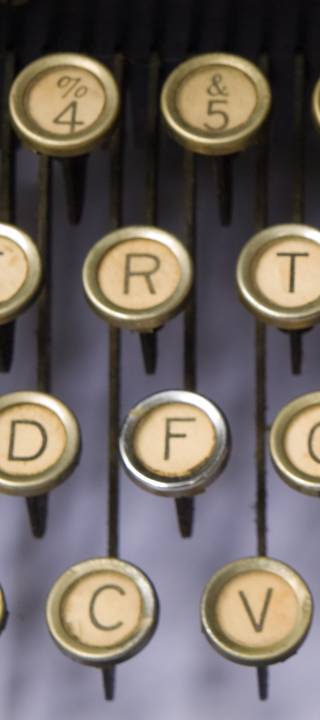When you look at typing speed but for personal use, I think the actually words per minute ratio, has not really changed. It really depends on how often the typewriter or computer is used, as with all activities the more you use it the better you become at it.
Early History of the Typewriter
 In 1714, Henry Mill obtained a patent in Britain for a machine that, from the patent, appears to have been very similar to a typewriter.
In 1714, Henry Mill obtained a patent in Britain for a machine that, from the patent, appears to have been very similar to a typewriter.
In 1808 Pellegrino Turri created a typewriter and carbon paper to provide the ink, which were invented to enable the blind to write.
However the 'Typographer' was invented in 1829 by William Austin Burt which was listed as one of the first typewriters.
Don't get me wrong if you lined up the original typewriters and asked me to type a document, I would find it quite difficult. The keys are heavy and you are unable to correct yourself which is common place in computers today.
 Through invention and the ideas of many people the typewriter was altered, amended and ultimately improved. Making way for the development of electric typewriters, word processors and personal computers.
Through invention and the ideas of many people the typewriter was altered, amended and ultimately improved. Making way for the development of electric typewriters, word processors and personal computers.
We must not forget the development of the QWERTY keyboard, as this hold significant importance to typing speeds.
When the original typewriters were invented they had problems with jamming. The characters were mounted on metal arms which would clash and jam if they were pressed with neighbouring arms simultaneously or in rapid succession. Unfortunately because of the design of the typewriters, the operator was unable to notice the jam until they removed the paper to review what they had written.
 Christopher Latham Sholes was the gentleman who invented the QWERTY keyboard with the basic principle not to put commonly used letter pairs together on the keyboard. This would then reduce jamming on the typewriter. It took him 5 years to perfect his invention and come up with the perfect arrangement of letters. His designs were tested and used on the Sholes and Glidden typewriter.
Christopher Latham Sholes was the gentleman who invented the QWERTY keyboard with the basic principle not to put commonly used letter pairs together on the keyboard. This would then reduce jamming on the typewriter. It took him 5 years to perfect his invention and come up with the perfect arrangement of letters. His designs were tested and used on the Sholes and Glidden typewriter.
In 1873 the typewriter was sold to E. Remington and Sons, where they made several adjustments to produce the keyboard we know and love today.
With both inventions happening to make the lives easier for everyone in business and at home, the speed of typing must of improved through the years.
However, I have researched this and can only find studies about professional typists and how the speeds have increased along with a expectations of employers, nothing about personal use. Therefore I am going to go back to my original statement, it really depends on how often you use your personal computer. With practise you can increase your words per minute and ultimately train yourself to become an efficient touch typer.
Though to be honest I do not think that this skill will be required in the future. With the invention of intelligent assistants like Siri on the Apple iPhone, who will write messages for you. I think it is possible to expect office workers (and home users) to have microphones and they will spend all day talking to their computers rather than using them.
